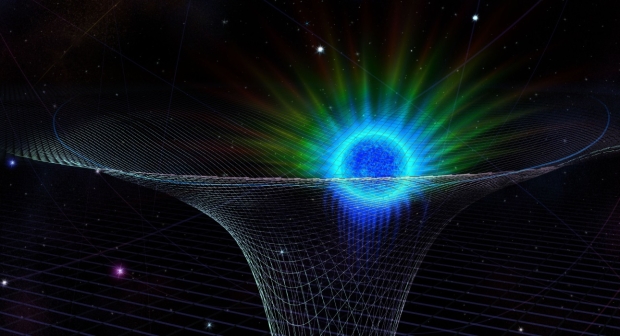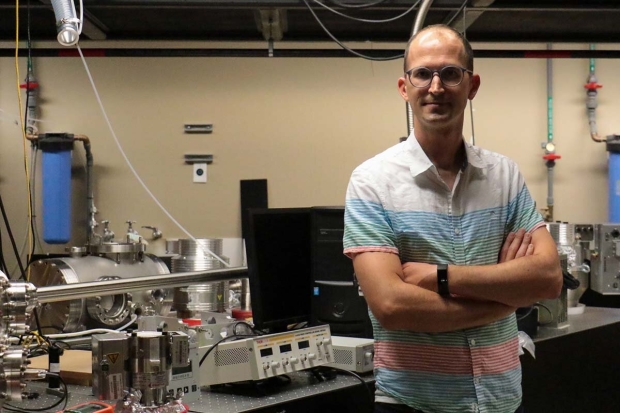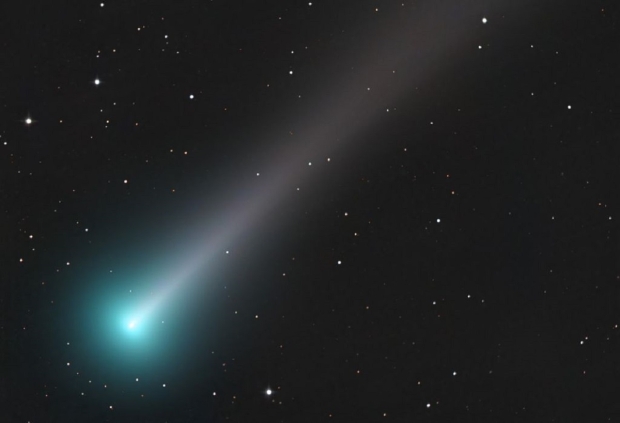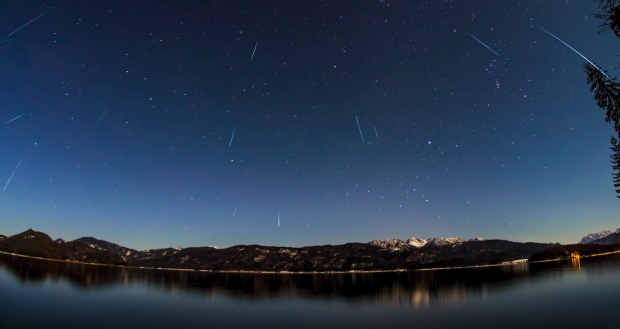Science, Space, Health & Robotics News - Page 222
Einstein's theory of general relativity passes 16-year tests
Since 1915 when Albert Einstein published his theory of general relativity, scientists have worked on testing its limits, and with the results of this 16-year test, it still holds up.
Professor Michael Kramer from the Max-Planck Institute for Radio Astronomy in Bonn, Germany, led an international team to complete this test, which included using Murriyang, Australia's radio telescope at CSIRO's Parkes Observatory. The theory of general relativity describes how gravity works at large scales across the universe, but it becomes unreliable at the atomic scale, where quantum mechanics are referred to instead.
"We needed to find ways of testing Einstein's theory at an intermediate scale to see if it still holds true. Fortunately, just the right cosmic laboratory, known as the 'double pulsar,' was found using the Parkes telescope in 2003. Our observations of the double pulsar over the past 16 years proved to be amazingly consistent with Einstein's general theory of relativity, within 99.99 percent to be precise," said Dr. Dick Manchester, a fellow at CSIRO.
Continue reading: Einstein's theory of general relativity passes 16-year tests (full post)
World's first optical oscilloscope developed
A team from the University of Central Florida (UCF) has developed the world's first optical oscilloscope, capable of measuring the electric field of light.
An oscilloscope is an instrument that graphically displays electrical signals and shows how they change over time regarding voltage, amplitude, frequency, and other factors. This new device converts light oscillations into electrical signals, then displayed on the oscilloscope.
Light oscillates significantly faster than electric fields in current technology, which oscillates at gigahertz frequencies corresponding to the radio and microwave regions of the electromagnetic spectrum. The increased frequency of light waves allows them to transmit a significantly higher density of information but has also been the source of the difficulty in reading its electric field.
Continue reading: World's first optical oscilloscope developed (full post)
One trip to space emits more carbon than a billion people's lifetimes
The 2022 World Inequality Report states that one space flight emits more carbon dioxide than the lifetimes of one billion people.
The newly released report outlines the carbon costs of launching a rocket to space and compares that amount of carbon per tonne to the amount of carbon created by one billion of the world's poorest individuals over their lifetimes. The passage also mentions that the carbon footprint of the spaceflight that is being compared to the carbon footprint of the individuals is over an 11-minute space ride.
According to the report, around one billion individuals emit less than one tonne of carbon per person per year. Over a lifetime, this group of one billion individuals "does not emit more than 75 tonnes of carbon per person". This report, and specifically the comparison between the carbon footprint of a single 11-minute spaceflight and the carbon footprint of one billion of the world's poorest individuals, puts a spotlight on the unequal distribution between the carbon footprint of wealthy individuals compared to poor individuals.
Continue reading: One trip to space emits more carbon than a billion people's lifetimes (full post)
NASA says how to spot comet Leonard that's close to Earth right now
Comet Leonard will be passing safely by Earth at a distance of 21 million miles, and it's currently at its closest point to Earth before it makes its way closer to the Sun.
Astrophotographer Chris Schur.
What is expected to be the brightest comet of 2021, Come Leonard, or Comet C/2021, is currently at its closest point to Earth at a safe distance of 21 million miles. The comet was first discovered by Gregory J. Leonard in January 2021, and after observing the comet more, the researchers discovered it has an extremely elliptical orbit around the Sun that takes around 80,000 years to complete. After Leonard passes Earth, it will be ejected out of the solar system for millions of years.
Continue reading: NASA says how to spot comet Leonard that's close to Earth right now (full post)
Supermassive black hole caught blasting out jet shaped similar to DNA
A galactic jet has been ejected from the only black hole that humans have ever taken an image of, and researchers believe it's shaped like a helix.
Messier 87 galactic jet helix structure.
According to a statement from the National Radio Astronomy Observatory, the black hole is located 55 million light-years from Earth at the center of the elliptical galaxy called Messier 87, which is the same and only black hole ever to be photographed. The National Radio Astronomy Observatory states it operated the Very Large Array and found that the jet is shaped by a corkscrew-shaped magnetic field that stretches from the center of the black hole out at a distance close to 3,300 light-years.
Continue reading: Supermassive black hole caught blasting out jet shaped similar to DNA (full post)
Geminid meteor shower is hitting its peak right now, watch it here
The annual Germinid meteor shower is happening right now as Earth's orbit takes it through a debris field left by an asteroid.
If you are living in an area that has unfortunate viewing conditions such as cloud cover, or dust, you will be glad to know that you can still participate in the viewing of the Germinid meteor shower online via NASA's livestream. NASA is live streaming the Germinid meteor shower from a camera located at the agency's Marshall Space Flight Center in Alabama. The meteor shower is expected to have anywhere between 100 and 150 meteors per hour.
While there are many meteors expected to be seen, NASA warns that the Moon will be about 80% full and may reduce visibility due to its brightness, bringing down the expected amount of meteors per hour to 30 or 40. However, the Moon is expected to set at around 2:00 am on December 14. After 2:00 am is what is being considered as the best viewing opportunity.
Continue reading: Geminid meteor shower is hitting its peak right now, watch it here (full post)
NASA telescope images majestic spiral galaxy, 'bright bands of stars'
NASA has posted a new image on its blog that showcases a stunning spiral galaxy located 250 million years from Earth.
NASA has posted the images on its social channels and explains that the spiral galaxy is named UGC 11537 and is located in the constellation Aquilla. The Hubble Space Telescope has pointed its Wide Field Camera 3 at the galaxy and has captured the large spiral arms, as well as two prominent stars located in the foreground of the image.
NASA notes that the spikes seen on each of the stars are a result of the starlight interacting with Hubble's camera - defined as "diffraction spikes". Additionally, the space agency explains that the image showcases large amounts of dark dust clouds. This image of UGC 11537 comes from a set of observations designed to assist astronomers in measuring supermassive black holes that are located at the center of galaxies such as UGC 11537.
Continue reading: NASA telescope images majestic spiral galaxy, 'bright bands of stars' (full post)
Elon Musk reveals plans on converting CO2 into fuel
SpaceX and Tesla CEO Elon Musk has announced to his nearly 70 million Twitter followers plans on developing technology that can remove CO2 from the atmosphere.
Elon Musk took to his Twitter account to announce that SpaceX is currently developing a program that will focus on removing CO2 from Earth's atmosphere and converting it into fuel that will be used to power rockets. Musk ended the Tweet by asking the public to "join" if they are interested, which I can only imagine everyone will be, as there has been quite a lot of focus put on the environmental impact, or carbon footprint of rocket launches.
Musk also added that this new technology would be necessary to colonize Mars, saying this "will also be important for Mars". For those that don't know, Mars' atmosphere consists of 95% carbon dioxide, 3% nitrogen, 1.6% argon, with traces of oxygen and other gases. Having technology capable of converting CO2 into rocket fuel would provide massive utility to colonists on the surface, as they would be able to perform multiple launches at a cost-efficient price.
Continue reading: Elon Musk reveals plans on converting CO2 into fuel (full post)
Here's how you can see the Geminid meteor shower happening today
One of the best meteor showers of 2021 is scheduled to happen later today, as Earth's orbit passes through debris from an asteroid.
In a recent video posted to the NASA Jet Propulsion Laboratory YouTube channel, the space agency explains that the meteor shower viewing is highly dependant on the brightness of the Moon, and this year the Moon will be at 80% full during the peak on December 13 - 14. However, at 2 am the Moon will set, leaving some hours for meteor showering viewing before sunrise. If you are planning on seeing some meteors, you will need to look out towards the
The Geminid meteor shower is an annual meteor shower that happens in December when Earth's orbit passes into a debris field created by an asteroid called Phaethon. NASA says that Phaethon is stretching the definitions of what a comet and an asteroid are, as it was discovered that Phaethon emits fizzing sodium that plays the same role as vaporizing ice on a comet. Below you will find some advice from NASA on viewing meteor showers.
Continue reading: Here's how you can see the Geminid meteor shower happening today (full post)
Ghostly galaxy observed for 40 hours, deepens mystery of dark matter
A team of researchers observed a galaxy for forty hours and didn't detect any trace of dark matter being present, breaking current theories.
A team of researchers published the results of the study on the pre-print server arXiv, and it's expected to be published in the Monthly Notices of the Royal Astronomical Society, details the galaxy named AGC 114905, located around 250 million light-years from Earth. For some time, dark matter has been one of the main mysteries of the universe, and while researchers can directly see it, they can detect it by measuring the interaction between celestial objects.
If an object behaves in a way that normal matter can't explain, researchers infer that dark matter is present. As Science Alert reports, an example of this would be stars spinning at velocities higher that can't be explained with normal matter. According to the researchers behind the recent paper, previous measurements of AGC 114905 suggested that the galaxy didn't contain any dark matter, which their forty-hour observation only confirmed, only deepening the mystery of dark matter.
Continue reading: Ghostly galaxy observed for 40 hours, deepens mystery of dark matter (full post)











